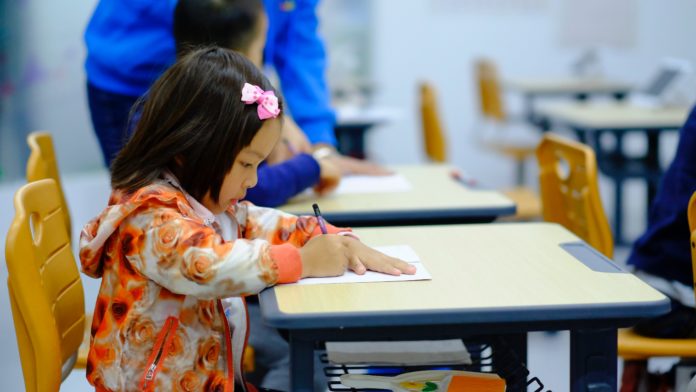Teaching is hard! And teaching via mastery or competency-based learning may seem even harder. Imagine having your students at different levels of comprehension in the same class doing different activities that are appropriate to each individual student. Or, in other words…extreme differentiation. Personalizing instruction to each student probably seems logistically unmanageable. But is it?
Mastery learning has been around for a long time. You had to pass your driver's test to get a driver's license. You probably had to pass the Praxis test to become a teacher. Doctors have to pass their board exams to practice medicine. The big idea behind these forms of assessment is that if you fail, it’s OK. You get remediation and then retake the assessment until you reach mastery.
In my new book, The Mastery Learning Handbook: A Competency-Based Approach to Student Achievement (ASCD, 2022), I define mastery learning as
An approach to classroom instruction that empowers every student at every level to progress with confidence. The teacher uses flexible pacing to guide students through a cyclic process of preparation, demonstration of knowledge, and feedback until there is a mutual agreement between the teacher and individual student that the student is ready for the next cycle to begin. (pg. 7)
Since students are not all at the same “place” in the curriculum, managing students at a variety of “places” is a challenge. And the biggest challenge is: What do you do with students who lag behind in their understanding? What happens if some students fail an assessment and needs remediation? Especially when other students are moving ahead? Taken to an extreme, you could have a huge gap in student progress that is unmanageable.
The Solution(s)
There is no magic solution for the problem of students who fall behind. But there are strategies that, when taken as a whole, help me, a classroom teacher, have a manageable mastery-learning classroom: differentiating objectives, assessing different levels of mastery, remediation, and just good teacher stuff.
1. Differentiating Objectives
The first solution starts in the planning stage. When I look at a list of my teaching objectives, I classify them as either “need to know” or “nice to know.” In your own practice, you might call them the essential targets vs. the nonessential targets. For example, in my high school chemistry class, I might have seven objectives in a unit, where five of the objectives are essential and two are “nice to know.” Most of my students can master all seven of the objectives in the time I prescribe for the unit. But there are always students who fall behind. I only expect them to master the “need to know” objectives.
One added benefit to this strategy is that I am able to teach the course at a higher level. Before mastery learning, I confess that I taught to the “middle” student. I did not provide enough differentiation for my advanced students. And to be honest, those students who deeply struggled were left behind. But now, by differentiating learning objectives, I can challenge both the advanced students and better support the struggling students.
2. Assessing Different Levels of Mastery
The second solution is related to the first. When students take the exit assessment at the end of a unit, they are given a choice among three different levels of assessments. My students choose to take either the “Basic Understanding” assessment, the “Clear Understanding” assessment, or the “Deep Understanding” assessment. They are expected to “pass” one of these assessments to demonstrate mastery.
It is essentially a choose-your-own-adventure model. They make this choice in each separate unit. I find that in some units, most students challenge themselves to the harder content, while in other units, more students choose the less challenging options. (Side note: grading can vary widely from teacher to teacher. I take off points for those who take lower-tier tests. So, for example, a student may only attain a B maximum for taking a low-challenge test.)
I also allow student to retake assessments. As I write, some are here in school during their “off period” retaking assessments that they have not passed previously. We did some remediation, and now they are demonstrating mastery by taking a different assessment. In one case, a student is challenging himself with deep mastery while another student is working to demonstrate “clear understanding.”
3. Remediation
I use a variety of remediation strategies to help students who fall behind. This works well when the majority of class time is devoted to students working toward their individual mastery objectives. This frees them—and me—to work collaboratively on difficult topics.
- Do the Work: Since I flip the learning in my classes (delivering the lesson introduction through video or an excerpt from a text), I can easily tell when students either did not start or partially completed the prework component of the lesson. Simply having them do the prework (a short video or a short reading) often solves the problem.
- Instant Groupings-Gradual Release: I constantly look for students who are struggling to grasp the same topic/objective and then I put them into tutorial groups. Just yesterday, I had two students who had struggled to pass one of the assessments, and they were both confused about the same topic. I had them meet me at a station, where I ran through a short tutorial. I then had them work on a similar problem together. As they worked through it together, they mastered the difficult concept.
- Summative Assessment Remediation: For students who take a summative assessment and perform poorly, I take time to go over the results with them and identify where they have gaps in understanding. Often this individual time is all students need to master the material successfully. Then students retake the assessment and are usually quite successful.
4. Good Teacher Stuff
Teaching is more of an art than a science. I have found that students struggle for a variety of reasons. Some students genuinely struggle and are committed to the learning process, while others have executive functioning issues, while others simply need more motivation. In my 36 years of teaching, I have found two consistent ways to motivate students.
The first is to communicate. If a student is struggling, I communicate with a variety of key stakeholders.
- Caregivers: My first email or phone call is to my student's caregiver. In that communication, I suggest a plan to get them caught up. That usually involves having a meeting with the student where I diagnose their misconceptions and provide some personal tutoring to help them where they struggle.
- SPED Staff: For those students with IEPs, I bring in our special education staff. Their expertise has really helped me to not only motivate students who fall behind but also to help me better reach students through different instructional strategies.
- Other Adults: For athletes, I communicate with coaches. I have found that a coach who knows their player is struggling has different motivational tools than I have.
The second is to focus on relationship-building. Students perform better when they know that their teacher is on their side. There is no magic recipe for relationships unless it is to simply care and take an interest in the lives of your students. I have found that building relationships with students is the best way to help not only your struggling students but all students.
Mastery Learning is Here
I firmly believe mastery learning’s time has come. It is time for us to reconsider what needs to happen in our classrooms. It is the right strategy because it addresses the needs of our students today. Not only will it help us teach our way out of the pandemic, but it is a method or strategy that helps students take control of their own learning.
The Mastery Learning Handbook
Join teacher Jon Bergmann in this step-by-step guide to the mastery learning cycle and come away with templates, models, and rubrics you can start using in your own classroom today.









